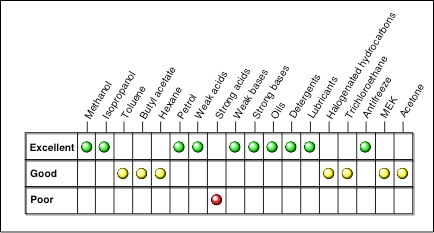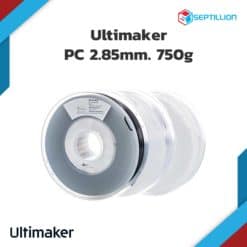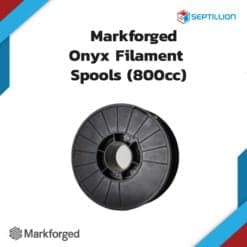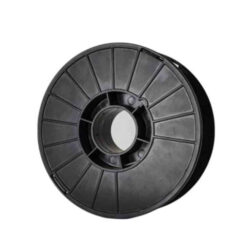3DXTECH CARBONX PA6+CF GEN 3 [CARBON FIBER NYLON] 500G
- Home
- Shop
- Filaments, Nylon Filaments
- 3DXTECH CARBONX PA6+CF GEN 3 [CARBON FIBER NYLON] 500G
![CarbonX-PA6+CF-Gen3-on-web-cover CARBONX PA6+CF GEN 3 [CARBON FIBER NYLON]](https://septillion.co.th/wp-content/uploads/CarbonX-PA6CF-Gen3-on-web-cover-510x510.webp)
![CARBONX PA6+CF GEN 3 [CARBON FIBER NYLON]](https://septillion.co.th/wp-content/uploads/CarbonX-PA6CF-Gen3-on-web-white-bg-510x510.webp)
![CARBONX PA6+CF GEN 3 [CARBON FIBER NYLON]](https://septillion.co.th/wp-content/uploads/CarbonX-PA6CF-Gen3-on-web-cover-247x247.webp)
![CARBONX PA6+CF GEN 3 [CARBON FIBER NYLON]](https://septillion.co.th/wp-content/uploads/CarbonX-PA6CF-Gen3-on-web-white-bg-247x247.webp)
3DXTECH CARBONX PA6+CF GEN 3 [CARBON FIBER NYLON] 500G
฿2,300.50 Inc. VAT
CarbonX™ PA6+CF [Gen3] is made using a specialty Nylon 6 [PA6] copolymer and high-modulus carbon fiber. This is the go-to material for industrial applications that require superior thermal, mechanical, and chemical resistance properties while retaining the ease of printing that you’ve come to expect.
- Description
- Additional information
Description
This post is also available in: ไทย (Thai) 日本語 (Japanese)
Gen 3 CarbonX™ PA6+CF Carbon Fiber Reinforced Nylon
Carbon fiber reinforced nylon for durable
Gen 3 CarbonX™ PA6+CF filament is formulated using a PA6 copolymer reinforced with high-modulus carbon fiber. This filament is ideal for anyone that desires a structural component with high modulus, improved chemical and thermal resistance, excellent surface quality, and ease of printing. Gen3 has higher HDT than our previous grades (147°C at .45MPa) allowing for expanded use in higher-temp applications.
Gen 3 CarbonX™ PA6+CF Carbon Fiber Reinforced Nylon
Gen 3 CarbonX™ PA6+CF filament is formulated using a PA6 copolymer reinforced with high-modulus carbon fiber. This filament is ideal for anyone that desires a structural component with high modulus, improved chemical and thermal resistance, excellent surface quality, and ease of printing. Gen3 has higher HDT than our previous grades (147°C at .45MPa) allowing for expanded use in higher-temp applications.
Unparalleled rigidity gives designers the properties they need to make their 3D printed parts with less material and save weight without sacrificing stiffness.

Extruder Temp
240-270°C

Bed Temp
80-110°C

Heated Chamber
Not required, but improves layer bonding

Nozzle Specs
0.4mm diameter minimum Hardened Steel Nozzle

Bed Adhesion
Magigoo Bed Prep

Layer Height
0.25mm or higher

Drying Specs
90°C for 4 hours

Supports
Water Soluble Support
Benefits of Nylon PA6+CF:
Excellent printability
High tensile strength and rigidity
Abrasion and wear resistance
Improved chemical resistance over traditional 3D printing materials
High thermal properties

Filament Specifications:
1.75mm and 2.85mm +/- 0.05mm in diameter
Recommended Print Settings:
Extruder: 240-270°C
Bed Temp: 80-110°C
Nozzle: We currently recommend a hardened steel nozzle with a minimum diameter of 0.4mm
Other: Ideal layer height is 60% of nozzle diameter. We do not recommend printing layers smaller than 0.2mm with carbon fiber reinforced filaments.
Bed Prep: Magigoo Bed Prep Adhesive gives us the best results
Heated Chamber: Not required, but a heated chamber between 30-80°C allows for superior layer bonding and mechanical properties
Supports: Water soluble AquaTek X1 USM works great for complex parts.
Drying Instructions: 90°C for 4 hours.
Carbon Fiber Reinforced Filament




What Is It?
Fibers 5-10 micrometers wide made of carbon. The fibers are aligned following the axis of the material.
This, along with their physical makeup, are what give this material its excellent properties.
What Does It Do?
Carbon Fibers demonstrate a lot of desirable material properties:
- High stiffness
- High tensile strength
- High heat tolerance
- High chemical resistance
- Low weight
- Low thermal expansion
How Does It Work?
Reinforcing plastic with carbon fibers produces a 3D printing filament which exhibits the best properties of both the carbon fibers and the plastic of choice.
What Is It Good For?
Ideal for any applications which require light weight and rigidity.
Carbon fiber reinforced parts, designed to use less material and save weight, is extremely popular in aerospace, civil engineering, the military, and motorsports.
Abrasive Material
This material is particularly abrasive among 3D printing filaments. Users may find standard brass nozzles are chewed through very quickly compared to standard wear and tear. When worn through, the nozzle diameter will widen inconsistently and the printer will experience extrusion issues.

Because of this, it’s strongly recommended this material be printed through a hardened steel nozzle rather than a softer metal. Hardened steel nozzles can often be inexpensive and easily installed depending on your printer manufacturer’s instructions.
Additional information
| Weight | N/A |
|---|---|
| Diameter | 1.75 mm., 2.85 mm. |
| Colors |














